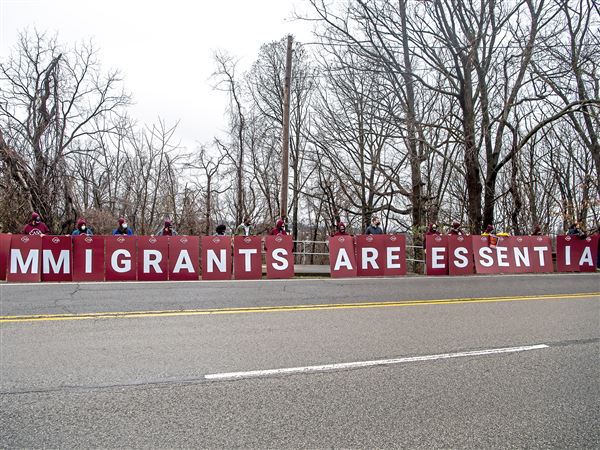When Confederate Gen. John Hunt Morgan escaped from the Columbus Penitentiary, the story was front-page news in The Daily Pittsburgh Gazette.
Readers in Southwestern Pennsylvania would have had special interest in that report since the state's Western Penitentiary was housing 118 of Morgan's men. The Confederate cavalrymen had been on a raiding expedition through Kentucky, Indiana and Ohio when they were captured in late July 1863.
The Southern prisoners were divided among several camps with many of Morgan's men transported to the old state prison, which stood at the site of the present-day National Aviary on Pittsburgh's North Side.
Morgan and his senior commanders were jailed first in Cleveland and then taken to the state prison in Columbus.
The initial report in the Gazette on Nov. 30, 1863, said Morgan and five comrades had escaped three days earlier. That number soon was revised upward to say a total of seven men had fled. Reward for their capture was set at a modest $1,000. That number translates into about $19,000 in modern currency.
The Gazette on Dec. 2 reprinted details from a Cincinnati Gazette story describing Morgan's escape. Using two table knives, the Confederates dug through the floor of their prison cells into a ventilation duct below.
"After establishing communication with the air chamber, they excavated with a small coal shovel a tunnel ... passing under the walls of the prison [building]," the story said.
The Confederate officers had been housed on two levels of the state prison, with Gen. Morgan on the upper level, which did not have access to the newly dug tunnels. On the evening of the escape, Gen. Morgan surreptitiously traded places with his brother, Richard, as all the prisoners were being locked into their cells for the night. "It was part of their plan that Dick Morgan should remain behind," the story said.
When a prison guard making his night rounds looked into Gen. Morgan's cell, "Richard responded by showing his foot."
"[The] trick was not discovered until the morning when the birds had flown," the story said.
That same edition of the Pittsburgh Gazette included a special dispatch claiming, "It is certain that the rebel guerrilla chief, John Morgan, is safe in Toronto with six rebel companions of his flight."
That story had to be corrected on Dec. 5, when the Gazette quoted a report published in the Toronto Leader. U.S. authorities had believed that Morgan "would endeavor to reach Canada as the nearest place of security" and were ready to believe the guest who signed himself into Toronto's Queen's Hotel as "John Morgan, Brig. Gen., C.S.A."
"This entry was made during the day by some wag staying at the house, who probably desired to see the effect it would create in this Southern-sympathizing community," the Canadian newspaper concluded.
The Cincinnati Gazette more accurately concluded that Morgan and his officers "are undoubtably concealed by rebel sympathizers in Ohio." The newspaper should have stopped there, but the story went on to speculate about the Confederate's escape route. "He may possibly have reached Kentucky, but this is not probable."
That, however, was exactly what happened, with Morgan traveling with the aid of local supporters through Kentucky to the safety of Confederate territory in the South.
Morgan's luck ran out on Sept. 4, 1864. He was killed in Greenville, Tenn., by a Union cavalryman. Confederates claimed he had been trying to surrender when he was shot.
First Published: December 8, 2013, 5:00 a.m.
















